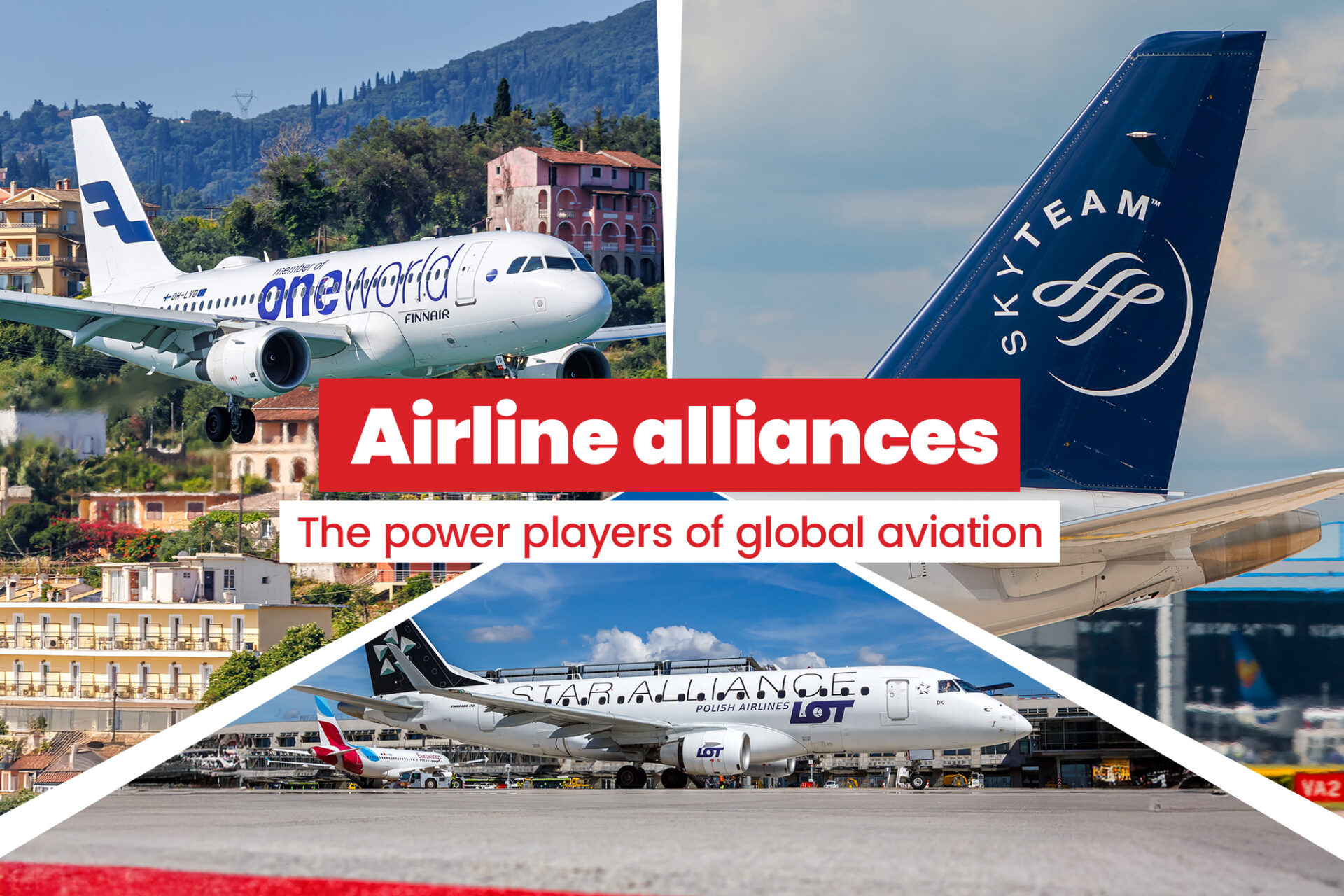Co-founder and Principal of Air52 Aviation Consultants, Koen Karsbergen brings over two decades of experience in airline management and strategy to his columns.
Through Air52, Koen assists airlines, airports and industry stakeholders with practical solutions for complex challenges, drawing on his extensive background in feasibility studies, fleet and network planning, and airline startups. He also contributes to IATA training courses and serves as faculty for Aviation MBA programs.
The views and opinions expressed in this column are solely those of the author and do not necessarily reflect the official policy or position of AeroTime.
Picture yourself navigating the gleaming corridors of Singapore’s Changi Airport (SIN), seamlessly transferring from your Lufthansa arrival to that crucial Singapore Airlines connection to Sydney. In this moment, you’re experiencing the invisible threads that bind the global aviation network together. This is the world of airline alliances, where fierce competitors transform into careful collaborators, all working to connect passengers across the globe.
Evolution of global aviation networks
Think about it, we have global hotel chains, worldwide retail brands, and international car manufacturers. Yet, despite aviation being the most global of industries, we’ve never seen a truly global airline emerge. Why? The answer lies in a complex web of regulations that strictly control where airlines can fly and effectively prevent international mergers.
These restrictions led airlines to seek an innovative solution. In 1997, five visionary carriers – United Airlines, Lufthansa, Air Canada, Thai Airways, and Scandinavian Airlines – created Star Alliance, establishing a new way for airlines to achieve global reach while respecting national regulations. This revolutionary partnership model transformed aviation, spurring the creation of oneworld (1999) and SkyTeam (2000).
Over the years, Star Alliance has grown to become the largest global alliance with 26 member airlines, followed by SkyTeam with 19 members and oneworld with 13 full members, with Oman Air joining in June 2025 and Fiji Airways transitioning to full membership by late 2025. Together, these alliances carry more than 40% of the world’s passengers.
Alliance objectives: Beyond code sharing
While alliances build upon interline and codeshare agreements, they represent a deeper level of cooperation aimed at four fundamental strategic goals:
- Network expansion through coordinated schedules and routes
- Revenue enhancement through joint sales and marketing initiatives
- Enhanced customer experience through seamless travel integration
- Competitive positioning against other alliance groups
Benefits and challenges of alliance membership for airlines
Alliance membership offers participating airlines several significant advantages. Airlines that join alliances gain access to new markets without the need to launch their own routes, while also enhancing their revenue through network feed from partner carriers. Cost reduction is achieved through the sharing of airport facilities between airline partners, and airlines within alliances enjoy a strengthened competitive position in the global market. The sharing of technology and best practices among alliance partner airlines further enhances operational capabilities.
However, being an airline member of an alliance comes with its own set of challenges that carriers must navigate. Partner airlines face reduced operational flexibility and must work through complex decision-making processes involving multiple airline stakeholders. Airline members often encounter potential conflicts between their individual strategies and alliance objectives. The financial aspect presents another hurdle, with both integration costs and ongoing alliance membership fees to consider. Partner airlines must maintain compliance with alliance standards and are required to offer perks to other airlines’ frequent flyers. Additionally, airlines risk brand dilution when alliance partner carriers maintain lower service standards.
When Alliances face turbulence
Despite the fact that alliance members do work closely together, it must be important to realize that they do not share cost, revenue, or profits in any way. To the contrary, each member airline is actively competing against their alliance partners.
This explains why airlines increasingly pursue partnerships outside alliance structures. Notable examples include:
- oneworld member Qatar Airways’ equity stake and ever-expanding codeshare agreement with SkyTeam’s LATAM, demonstrating cross-alliance cooperation
- The Qantas-Emirates partnership, extended until 2028, where Qantas maintains its strategic partnership with a non-alliance carrier and a direct competitor of Qatar Airways, a fellow oneworld member
- Star Alliance member Singapore Airlines’ expanding partnership with SkyTeam member Garuda Indonesia, including increased flight frequencies and a joint venture on routes between Singapore and Indonesia
These arrangements offer more flexibility than traditional alliance membership while still providing network benefits and present a more positive business case to the airlines involved than staying within the alliance.
The passenger perspective
From a traveler’s viewpoint, flying with alliance member airlines brings both advantages and frustrations. Frequent flyers experience the convenience of seamless connections across multiple carriers and enjoy elite benefits like Star Alliance Gold or oneworld Emerald status, which grants them priority treatment regardless of which member airline they fly. The ability to access shared lounges worldwide adds another layer of comfort to their journey.
However, travelers also face distinct challenges when flying alliance carriers. Some find themselves paying higher fares on routes where alliance dominance has reduced competition. When service issues arise during multi-carrier journeys, passengers often struggle to determine which airline should address their concerns. While alliances promise consistent service levels, travelers frequently notice significant variations in their experience, particularly when switching between carriers from different regions or service cultures.
The business of alliance membership
Joining an alliance isn’t merely about sharing flight codes – it’s a multi-million dollar commitment. Initial joining fees can range from $10-30 million depending on airline size and market position. Annual membership fees typically run in the millions, yet the revenue benefits often outweigh these costs substantially. For instance, Star Alliance reports that connecting traffic between members can generate additional annual revenues of $100-200 million for a mid-sized carrier.
However, membership isn’t just about writing checks. Airlines must undergo rigorous operational audits, align their service standards, and integrate complex IT systems. This process typically takes 18-24 months and requires significant investment in staff training, technology upgrades, and facility modifications.
The independent operators
Not all airlines see alliance membership as essential. Low-cost carriers typically avoid alliances due to their focus on point-to-point traffic and simpler operating models. Their business strategy emphasizes operational efficiency and cost control, making the financial and operational commitments of alliance membership often counterproductive to their core business model. The integration costs, membership fees, and required service standardization would conflict with their lean operating philosophy and autonomous decision-making approach.
Some network carriers strategically choose independence to maintain flexibility in partner selection and market development. This is particularly evident in the Gulf region, where carriers like Emirates and Etihad Airways have opted to focus on individual codeshare partnerships. Emirates values its ability to react in the marketplace without needing consensus from alliance partners, while both carriers have expanded their networks through bilateral agreements that provide access to hundreds of additional destinations.
Notable examples of successful independent full-service carriers include Emirates, which has access to more than 300 extra destinations through codeshare partnerships, and Etihad Airways, which has built a network of more than 350 destinations through strategic partnerships with airlines like China Eastern, ITA Airways, Lufthansa, and SWISS.
Future horizons
As aviation enters a new era, alliances are evolving beyond traditional air travel. Star Alliance’s partnership with Deutsche Bahn and Swiss Federal Railways demonstrates how alliances are embracing intermodal transportation, allowing passengers to book combined air-rail journeys while addressing both convenience and sustainability concerns.
Digital integration, virtual interlining, and changing consumer preferences continue reshaping alliance roles. The next frontier may lie in deeper integration of artificial intelligence for network optimization, enhanced passenger services, and improved operational efficiency. As airlines navigate post-pandemic recovery and environmental challenges, alliances provide a platform for shared innovation and resource optimization that individual carriers might struggle to achieve alone.

